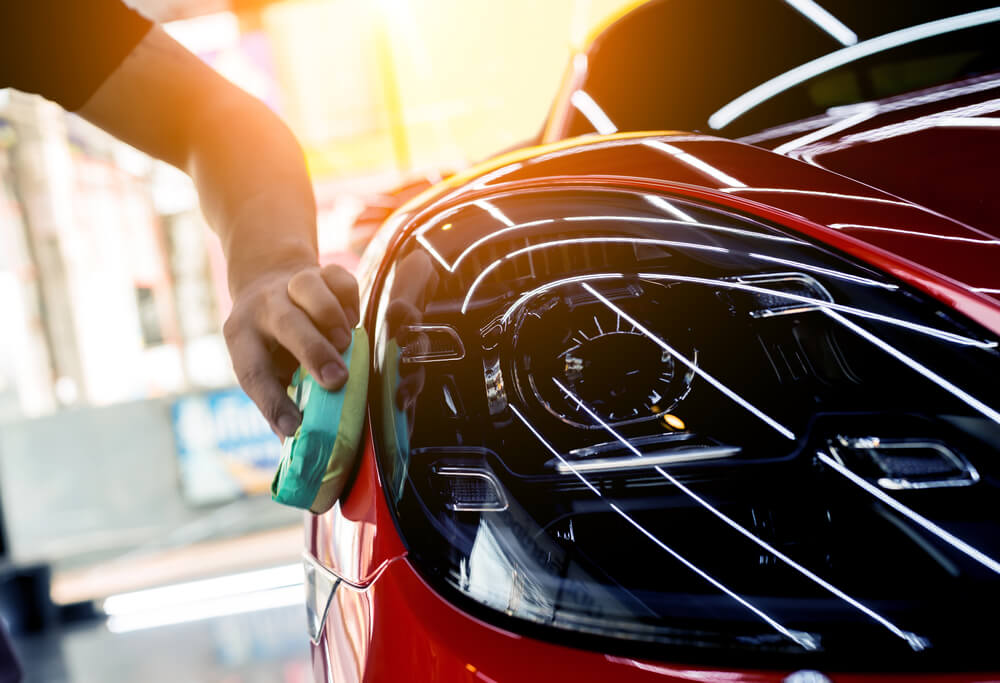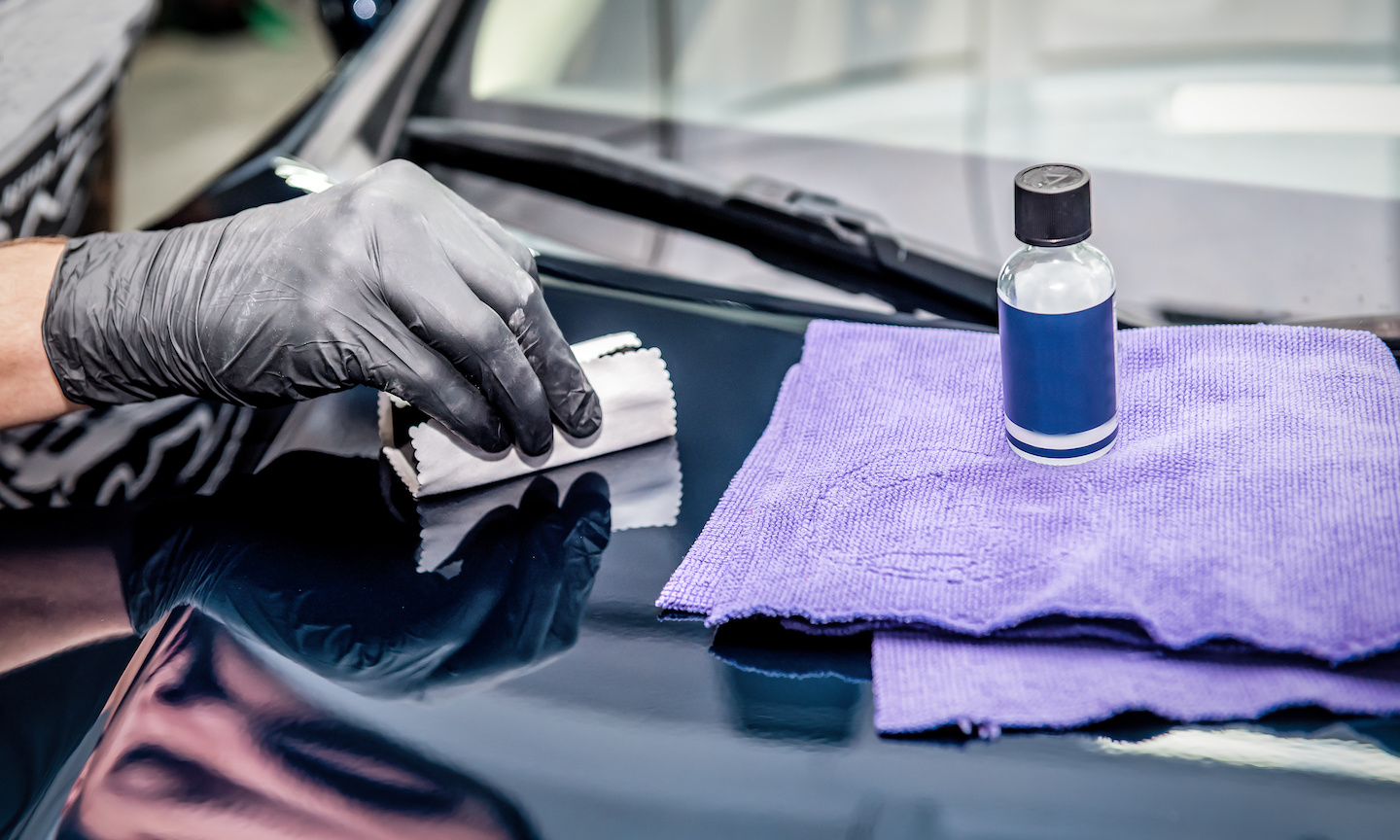Transform Your Ride with Ceramic Coating: A Step-by-Step Process
Recognizing the Scientific Research Behind Ceramic Coating for Enhanced Car Toughness
The science of ceramic covering is changing vehicle maintenance by giving a powerful shield versus extreme environmental elements. As we explore the detailed structure and application process of ceramic layers, we discover the secrets behind their superior security and longevity (ceramic coating). Just how does this compare to typical methods, and what ramifications does it have for vehicle upkeep in the long term?

Composition of Ceramic Coatings
Ceramic coatings are mostly composed of silicon dioxide (SiO2), which is obtained from all-natural products like quartz and sand. This compound forms the backbone of the finish, giving its characteristic solidity and resistance to ecological aspects. Along with SiO2, ceramic finishes frequently incorporate titanium dioxide (TiO2) for improved UV defense and enhanced resistance to toxic wastes. These nanocomposite products develop a durable, chemical bond with the car's surface, offering a long-lasting safety layer.
The formulation of ceramic coatings is a meticulous process where the concentration of SiO2 can substantially influence the finish's efficiency. Greater SiO2 web content commonly causes higher longevity and firmness, adding to the finishing's capacity to resist scrapes and chemical etching. However, the balance of components is essential; way too much SiO2 can make the finish brittle, while as well little can jeopardize its safety buildings.
Producers may also incorporate additional materials, such as polysilazane, to enhance flexibility and convenience of application. These ingredients enhance the layer's hydrophobic residential or commercial properties, making sure water and pollutants bead off the surface easily. This engineered make-up highlights the efficiency of ceramic coverings in guarding a car's exterior versus a range of unfavorable conditions.
Application Process Clarified
Applying a ceramic finishing to a lorry involves several essential actions, each necessary to making sure ideal attachment and performance of the protective layer - ceramic coating. The process begins with a thorough clean and decontamination of the automobile's surface to remove dirt, grime, and previous waxes or sealants. This action is essential as any type of contaminants left externally can prevent the finish's capacity to bond successfully
Adhering to the initial cleaning, the following step involves brightening the car to remove any kind of flaws, such as swirl marks or scratches. Polishing makes sure a smooth surface area, which is essential for the finishing to adhere properly and supply an uniform finish. After polishing, a surface area preparation spray is made use of to eliminate any remaining residues and make sure that the surface area is totally tidy.

Safety Advantages
Often hailed for its exceptional safety top qualities, a ceramic finish uses various advantages that significantly enhance automobile durability. At its core, ceramic layer creates a hard, semi-permanent barrier over an automobile's outside, which acts as a shield versus various environmental risks.
In addition, ceramic finishings show hydrophobic homes, implying they push back water and promote a self-cleaning impact. This attribute decreases the adherence of dirt and mud, streamlining upkeep and cleaning procedures. The layer's resistance to chemical etching additionally makes sure that the automobile's surface remains unblemished regardless of direct exposure to severe cleaner and toxins.
Along with these protective benefits, the ceramic covering improves a lorry's visual charm by developing a shiny finish that emphasizes color deepness and quality. This not only maintains the lorry's aesthetic appeal but also adds to its long-lasting worth by maintaining the honesty of its exterior with time.
Comparing to Conventional Approaches
Unlike conventional methods of car protection, such as shaving or sealers, ceramic coverings use an even more sturdy and lasting service. Where waxes and sealers generally give a short-lived layer of security, typically needing reapplication every few months, ceramic coverings form a semi-permanent bond with the automobile's paint. This bond develops a protective layer that is resistant to ecological pollutants, UV damages, and minor abrasions.
Typical waxes are primarily made up of natural parts like carnauba wax, supplying a shiny finish yet lacking the durable safety high qualities of ceramic coverings. Sealants, while synthetic and offering a little much better sturdiness than waxes, still fall short in comparison to the resilience and chemical resistance of ceramic layers. The innovative technology of ceramic coverings includes nanotechnology, which enables them to fill out tiny flaws in the paint surface, causing a smoother and more hydrophobic surface.
In terms of application, ceramic coatings need a more careful process, typically necessitating professional installment to make certain optimal performance. This contrasts with the fairly uncomplicated application of sealers and waxes, which can be used in your home. The exceptional protection and aesthetic improvement offered by ceramic finishings justify the financial investment for those seeking long-term car preservation.
Durability and Maintenance
Just how does the long life of ceramic coatings convert into simplicity of maintenance for automobile proprietors? The innovative formula of ceramic finishings supplies a durable safety layer on the car's surface area, Get the facts which substantially extends the life-span of the auto's outside surface.
Moreover, the hydrophobic nature of ceramic coatings allows water and other fluids to grain up and roll off the surface, lugging dust and particles with them. While the finish itself is durable, it is not completely maintenance-free. Hence, ceramic layers give a valuable balance in between long-term durability and streamlined upkeep for vehicle care.
Conclusion
Ceramic coverings, with their advanced chemical make-up of silicon dioxide and titanium dioxide, give an awesome obstacle versus environmental damage, dramatically enhancing car resilience. The hydrophobic residential or commercial properties advertise self-cleaning, lowering upkeep initiatives and maintaining visual allure. When contrasted to standard methods, ceramic coverings offer premium security versus UV rays, oxidation, and chemical etching. This modern technology expands the life-span of automobile outsides, making it a cutting-edge solution for long-term conservation and very little maintenance.
The formulation of ceramic finishes is a precise procedure where the concentration of SiO2 can substantially affect the finishing's performance.Using a ceramic finish to a vehicle involves a number of vital steps, each vital to making sure optimal bond and efficiency of the protective layer.Frequently hailed you can try this out for its exceptional safety high qualities, a ceramic finish supplies various advantages that considerably improve automobile longevity. The Recommended Reading innovative formulation of ceramic coatings gives a durable protective layer on the car's surface area, which significantly expands the lifespan of the auto's exterior finish.Ceramic coverings, with their advanced chemical composition of silicon dioxide and titanium dioxide, supply a powerful obstacle against environmental damage, significantly enhancing vehicle resilience.